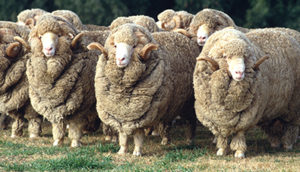Read the latest information on
Foot-and-mouth disease
 As we head into spring much of Australia is looking at a drier-than-average season, though there is always a chance of some much-needed rain. With that rain and warmer weather comes increasing disease risks, prompting Animal Health Australia to issue a reminder about footrot.
As we head into spring much of Australia is looking at a drier-than-average season, though there is always a chance of some much-needed rain. With that rain and warmer weather comes increasing disease risks, prompting Animal Health Australia to issue a reminder about footrot.
Footrot is an infectious bacterial disease which is spread between sheep through pasture and mud, particularly in warm and moist conditions and especially in spring and autumn. The bacteria attack the tissue in the foot, causing pain and inflammation and impacting on mobility, weight gain and condition.
“This is a nasty disease with significant implications for animal health and welfare, which can suddenly become a big issue if not managed,” said Dr Rob Barwell, AHA’s Senior Manager Biosecurity.
“While the bacteria will not spread readily in hot and dry conditions, it can persist in infected animals for several years. If it’s in the flock, it will spread quickly when the conditions allow for it.”
Depending on the severity of the infection and the strain involved, footrot may be classified as either benign or virulent, based on how effectively it eats away the tissues connecting the hoof to the rest of the foot.
Footrot is a notifiable disease in most states and some states have regulations in place for a diagnosis of virulent footrot in a flock.
“Controlling footrot can be a real hassle, taking a lot of time and effort,” Dr Barwell explained.
“Treatments are available and can help with treating the signs or ensuring uninfected sheep do not contract the disease, but the only way to truly be sure you’ve eradicated footrot is to cull infected animals and keep checking any remaining ones for signs of the disease.”
Diagnosis, control and eradication programs are best devised with the help of veterinarian and followed strictly. However it’s difficult to call the disease eradicated until you can observe the flock remaining free through conditions which would allow spread to occur.
If you’ve successfully eradicated the disease, or are fortunate enough to not be infected, preventing (re)infection is vital.
“It’s impossible to overstate how much value there is in preventing footrot infections in your flock,” said Dr Barwell.
“On-farm biosecurity strategies, starting with good boundary fences, isolation of new stock and always requesting a Sheep Health Declaration, are vital tools in your arsenal.”
Producers wanting to know more about biosecurity for sheep can visit the Sheep industry page of the Farm Biosecurity website.